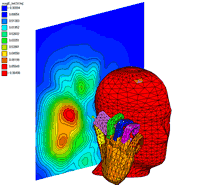Too many consumers still trust “lowest SAR” labels, assuming these phones are automatically safer. In reality, SAR tests only measure the thermal (heating) effects of a device and say little about the far more complicated non-thermal risks of radiofrequency (RF) radiation.
In fact, research from the U.S. National Toxicology Program (NTP) showed that lower SAR exposures (1.5 W/kg) produced more cancerous lesions in laboratory animals than higher SAR exposures (6 W/kg)—a clear demonstration of non-linear dose-responses. Similarly, studies on sperm health have found greater oxidative stress after four hours of lower-intensity exposure compared to twelve hours of higher-intensity exposure, suggesting that our bodies’ innate defenses may respond differently over time.
Meanwhile, long-term population data continue to ring the alarm: 25 years of cell phone use has been linked to a tripled risk of brain cancer. Current regulatory standards, which focus primarily on avoiding heat-related damage, fail to address these mounting red flags on non-thermal biological impacts.
When it comes to choosing a safer phone, “lowest SAR” vs. “highest SAR” is about as helpful—and as deceptive—as “light” vs. “regular” cigarettes. Don’t be misled by the marketing. It’s time we recognize the true risks of cell phone radiation and push for standards that account for all potential health effects—not just the ones that cause heat.








